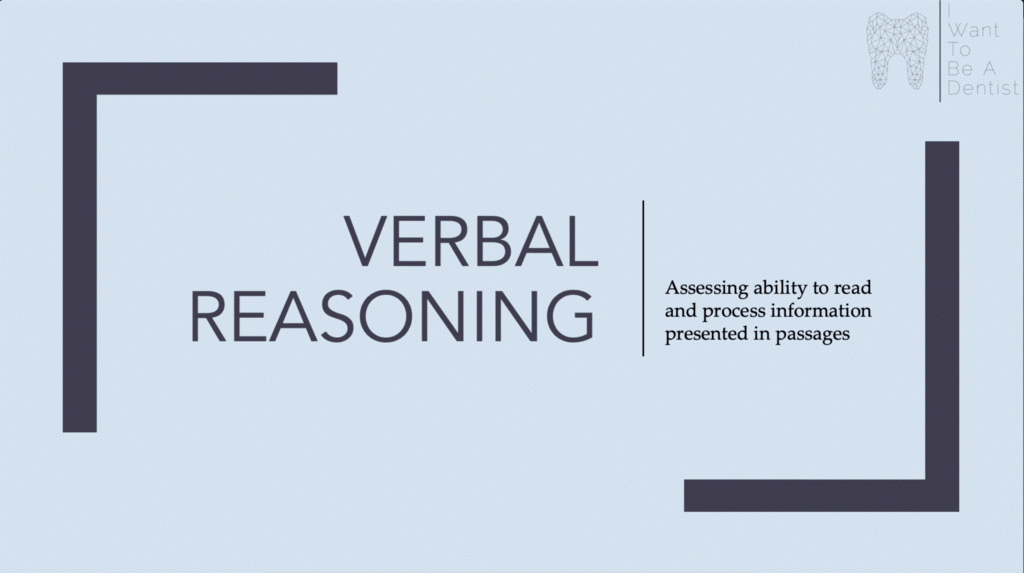True, False and Can't Tell | Verbal Reasoning for UCAT PDF Download
| Table of contents |

|
| Overview |

|
| Key Skills and How to Develop Them |

|
| UCAT-Specific Strategies |

|
| Practice Questions |

|
| Try These |

|
| Conclusion |

|
The True, False, and Can't Tell questions in the UCAT Verbal Reasoning subtest test your ability to critically evaluate written information and make logical judgments based solely on a passage. These questions require you to determine if a statement is True (explicitly supported), False (explicitly contradicted), or Can't Tell (neither supported nor contradicted). With 44 questions in 21 minutes (~28 seconds per question), efficiency and accuracy are crucial. This document explains how to approach these questions, covering key skills, strategies, and ample examples.
Overview
True, False, and Can't Tell questions involve a short passage (200–400 words) followed by four statements. You must assess each statement based only on the passage, ignoring external knowledge or assumptions. Passages cover diverse topics, such as medical research, healthcare policies, scientific discoveries, or social issues, testing your ability to extract and evaluate information under time pressure.
Key Skills and How to Develop Them
The following skills are essential for True, False, and Can't Tell questions. Each skill is explained with strategies and examples to illustrate how to apply it in the UCAT. Critical Thinking Assessment
Critical Thinking Assessment
1. Comprehension and Analysis of Text
What It Involves: Quickly understanding the main ideas, themes, and specific details in a passage. This includes identifying the purpose, tone, and key arguments.
How to Approach:
- Skim for Structure: Read the first sentence of each paragraph to grasp the passage’s main idea.
- Scan for Keywords: Look for terms related to the statement (e.g., names, numbers, or specific actions).
- Note Context: Understand whether the passage is factual, opinion-based, or speculative.
Example Passage: A 2023 study on diabetes management found that daily insulin injections reduced blood sugar levels by 25% in Type 1 diabetic patients. The study involved 5,000 participants across 10 countries and accounted for lifestyle factors like diet and exercise. Diabetes Care EfficiencyStatement: Daily insulin injections lowered blood sugar levels in Type 1 diabetic patients.
Diabetes Care EfficiencyStatement: Daily insulin injections lowered blood sugar levels in Type 1 diabetic patients.
Solution:
Step 1: Identify the main idea – the study focused on diabetes management and insulin injections.
Step 2: Scan for the statement’s keywords – "insulin injections" and "blood sugar levels."
Step 3: Confirm the passage states injections reduced blood sugar by 25% in Type 1 patients.
Answer: True – The statement is explicitly supported.
UCAT Tip: Focus on the passage’s core claim (e.g., "reduced blood sugar") to quickly confirm True statements.
Example Passage: A hospital introduced a new electronic health record (EHR) system in 2024, reducing administrative errors by 15%. Staff training took three months.
Statement: The EHR system was implemented in 2023.
Solution:
Step 1: Skim for the implementation timeline – the passage states 2024.
Step 2: Compare with the statement – 2023 contradicts 2024.
Answer: False – The passage explicitly contradicts the statement.
UCAT Tip: Pay attention to specific details like dates or numbers to spot contradictions.
2. Identifying Explicit Information
What It Involves: Determining if a statement is directly supported or contradicted by the passage, focusing on verbatim or paraphrased information.
How to Approach:
- Match Wording: Look for exact phrases or synonyms in the passage that align with the statement.
- Check Qualifiers: Note words like "all," "some," or "never" that may alter the statement’s accuracy.
- Spot Contradictions: Identify if the passage directly opposes the statement’s claim.
Example Passage: A vaccine developed in 2024 was 90% effective against a new influenza strain. Mild side effects, such as fatigue, occurred in 10% of recipients. Flu Vaccine Insights
Flu Vaccine Insights
Statement: The vaccine caused severe side effects in 10% of recipients.
Solution:
Step 1: Scan for "side effects" – the passage mentions "mild side effects" like fatigue.
Step 2: Compare with the statement – "severe" contradicts "mild."
Answer: False – The passage explicitly contradicts the statement.
UCAT Tip: Be cautious of qualifiers (e.g., "mild" vs. "severe") that can make a statement False.
Example Passage: A 2023 survey found that 70% of medical students preferred online learning for theoretical courses, while 30% favored in-person practical training.
Statement: Most medical students preferred online learning for theoretical courses.
Solution:
Step 1: Identify "preferred online learning" – the passage states 70% preferred it.
Step 2: Confirm "most" aligns with 70% (a majority).
Answer: True – The statement is supported by the passage.
UCAT Tip: Recognize paraphrasing (e.g., "most" for 70%) to confirm True statements.
3. Recognizing Implicit Information
What It Involves: Inferring whether the passage implies something without stating it explicitly, while avoiding over-interpretation.
How to Approach:
- Make Cautious Inferences: Only infer what is strongly suggested by the passage’s content.
- Avoid Overreach: If the inference requires assumptions beyond the text, choose Can't Tell.
- Check for Relevance: Ensure the statement relates to the passage’s scope.
Example Passage: A new surgical technique reduced operation times by 20% and was adopted by 50 hospitals in 2024. Healthy Surgery
Healthy Surgery
Statement: The new surgical technique improved patient outcomes.
Solution:
Step 1: Scan for information on patient outcomes – the passage only mentions operation times and adoption.
Step 2: Assess if shorter times imply better outcomes – this requires an assumption not supported by the text.
Answer: Can't Tell – The passage does not address patient outcomes.
UCAT Tip: If the passage lacks evidence for a claim, even if it seems plausible, choose Can't Tell.
Example Passage: A 2024 study showed that a plant-based diet lowered cholesterol levels in 80% of participants.
Statement: A plant-based diet is beneficial for heart health.
Solution:
Step 1: Identify "cholesterol levels" – the passage states they were lowered.
Step 2: Assess if lower cholesterol implies heart health benefits – this is a reasonable inference, as lower cholesterol is widely linked to heart health.
Answer: True – The passage strongly implies the statement.
UCAT Tip: For implicit statements, ensure the inference is directly tied to the passage’s content.
4. Evaluating Sufficiency of Evidence
What It Involves: Judging when the passage lacks enough information to confirm or deny a statement, often for speculative or unrelated claims.
How to Approach:
- Check for Missing Data: Identify if the passage omits details needed to evaluate the statement.
- Stay Within the Text: Avoid using general knowledge to fill gaps.
- Recognize Irrelevant Claims: If the statement addresses a topic not covered, choose Can't Tell.
 Analytical Insight
Analytical Insight
Example Passage: A 2024 report indicated that 60% of doctors used telemedicine for consultations in urban areas.
Statement: Telemedicine reduced consultation costs for patients.
Solution:
Step 1: Scan for "costs" – the passage only mentions telemedicine use, not costs.
Step 2: Assess if usage implies cost reduction – this requires an assumption not supported by the text.
Answer: Can't Tell – The passage lacks information on costs.
UCAT Tip: If a topic (e.g., costs) is not mentioned, choose Can't Tell, regardless of real-world knowledge.
Example Passage: A new antibiotic was effective against 95% of bacterial strains tested in a 2023 trial.
Statement: The antibiotic was widely available in pharmacies by 2023.
Solution:
Step 1: Scan for "availability" – the passage only discusses effectiveness, not distribution.
Step 2: Confirm the passage does not address pharmacy availability.
Answer: Can't Tell – The passage provides no information on availability.
UCAT Tip: Statements about topics outside the passage’s scope are typically Can't Tell.
5. Avoiding External Knowledge
What It Involves: Basing judgments solely on the passage, ignoring personal knowledge or assumptions.
How to Approach:
- Focus on the Text: Treat the passage as the only source of truth.
- Challenge Assumptions: If a statement feels familiar, verify it against the passage.
- Practice Discipline: Train to disregard real-world knowledge during practice.
 Cognitive Discipline
Cognitive Discipline
Example Passage: A 2024 study found that meditation reduced stress levels in 70% of participants.
Statement: Meditation is a common practice in mental health therapy.
Solution:
Step 1: Scan for "mental health therapy" – the passage only mentions stress reduction, not therapy.
Step 2: Avoid assuming meditation’s role in therapy, as the passage does not address it.
Answer: Can't Tell – The passage does not discuss therapy.
UCAT Tip: Even if a statement aligns with common knowledge, choose Can't Tell if the passage does not confirm it.
Example Passage: A new cancer treatment increased survival rates by 15% in a 2023 trial.
Statement: The treatment was chemotherapy-based.
Solution:
Step 1: Scan for "chemotherapy" – the passage only mentions a new treatment and survival rates.
Step 2: Avoid assuming the treatment type, as the passage does not specify.
Answer: Can't Tell – The passage lacks details on the treatment’s nature.
UCAT Tip: Resist using medical knowledge to infer specifics not provided in the passage.
UCAT-Specific Strategies
General Strategies
- Time Management: Allocate ~28 seconds per question. Skim the passage (10–15 seconds) and evaluate statements quickly (5–10 seconds each).
- Read Statements First: Glance at the statements before reading the passage to know what details to focus on.
- Use Elimination: Rule out True or False if evidence is clear, leaving Can't Tell as the default for ambiguous statements.
- Practice Skimming: Train to identify main ideas and keywords without reading every word.
- Flag and Move On: If a passage or statement is confusing, flag it and return if time allows.
 Efficient Reading
Efficient Reading
Avoiding Common Pitfalls
- Over-Interpreting: Don’t assume implications beyond the passage (e.g., shorter surgery times don’t automatically mean better outcomes).
- Ignoring Qualifiers: Words like "all," "always," or "never" can make a statement False if the passage is less absolute.
- Using External Knowledge: Base answers only on the passage, even if you know additional facts.
- Misreading: Double-check numbers, dates, or key terms to avoid careless errors.
 Medical Precision
Medical Precision
Practice Questions
Below are practice questions with passages and statements to reinforce the skills.
Practice Passage 1:
A 2024 trial tested a new painkiller, which reduced chronic pain in 85% of participants. The trial lasted six months and reported no significant side effects. Pain Management
Pain Management
Statement 1: The painkiller was effective for most participants.
Statement 2: The painkiller caused severe side effects.
Statement 3: The trial lasted one year.
Statement 4: The painkiller was approved for public use in 2024.
Solutions:
Statement 1: True – 85% indicates "most" participants, supported by the passage.
Statement 2: False – The passage states "no significant side effects," contradicting "severe."
Statement 3: False – The passage states six months, not one year.
Statement 4: Can't Tell – The passage does not mention approval for public use.
Practice Passage 2:
A 2023 report showed that wearable fitness trackers increased daily step counts by 20% in users. The devices were most popular among adults aged 25–40.
Statement 1: Fitness trackers increased physical activity in users.
Statement 2: The trackers were most popular among teenagers.
Statement 3: The trackers reduced obesity rates.
Statement 4: The report was published in 2023.
Solutions:
Statement 1: True – Increased step counts imply increased physical activity.
Statement 2: False – The passage states adults aged 25–40, not teenagers.
Statement 3: Can't Tell – The passage does not mention obesity rates.
Statement 4: True – The passage states a 2023 report.
Try These
Statement: A 2025 study found that virtual reality (VR) reduced anxiety symptoms in patients with PTSD by 40%.
Claim: VR therapy was more effective than traditional counseling.
Ans: Can't Tell – The passage does not compare VR to traditional counseling. Therapeutic VR
Therapeutic VRStatement: In 2024, a new policy required all hospitals to report antibiotic usage data monthly.
Claim: Hospitals were already reporting antibiotic use before 2024.
Ans: Can't Tell – The passage does not mention previous reporting practices.Statement: A clinical trial in 2023 tested a sleep aid that increased REM sleep by 30%.
Claim: The sleep aid was ineffective for deep sleep improvement.
Ans: Can't Tell – The passage only refers to REM sleep, not deep sleep.Statement: A survey showed that 90% of GPs were satisfied with electronic prescription systems.
Claim: Most GPs support discontinuing paper prescriptions.
Ans: Can't Tell – The passage discusses satisfaction, not support for discontinuation.Statement: An analysis revealed that countries with higher sugar taxes had lower soda consumption in 2023.
Claim: Sugar taxes caused a decline in soda sales.
Ans: Can't Tell – The passage shows correlation, not causation.
Conclusion
Mastering True, False, and Can't Tell questions requires practice in skimming passages, scanning for keywords, and evaluating statements strictly based on the text. By developing these skills and applying the strategies outlined, you can improve your accuracy and speed in the UCAT Verbal Reasoning subtest. Practice with diverse passages and time yourself to simulate exam conditions.
|
7 videos|15 docs|30 tests
|
FAQs on True, False and Can't Tell - Verbal Reasoning for UCAT
| 1. What is the UCAT and why is it important for medical school admissions? |  |
| 2. What key skills does the UCAT assess, and how can I develop them? |  |
| 3. Are there specific strategies for tackling the UCAT effectively? |  |
| 4. How can I find practice questions for the UCAT? |  |
| 5. What should I do if I feel anxious about taking the UCAT? |  |















